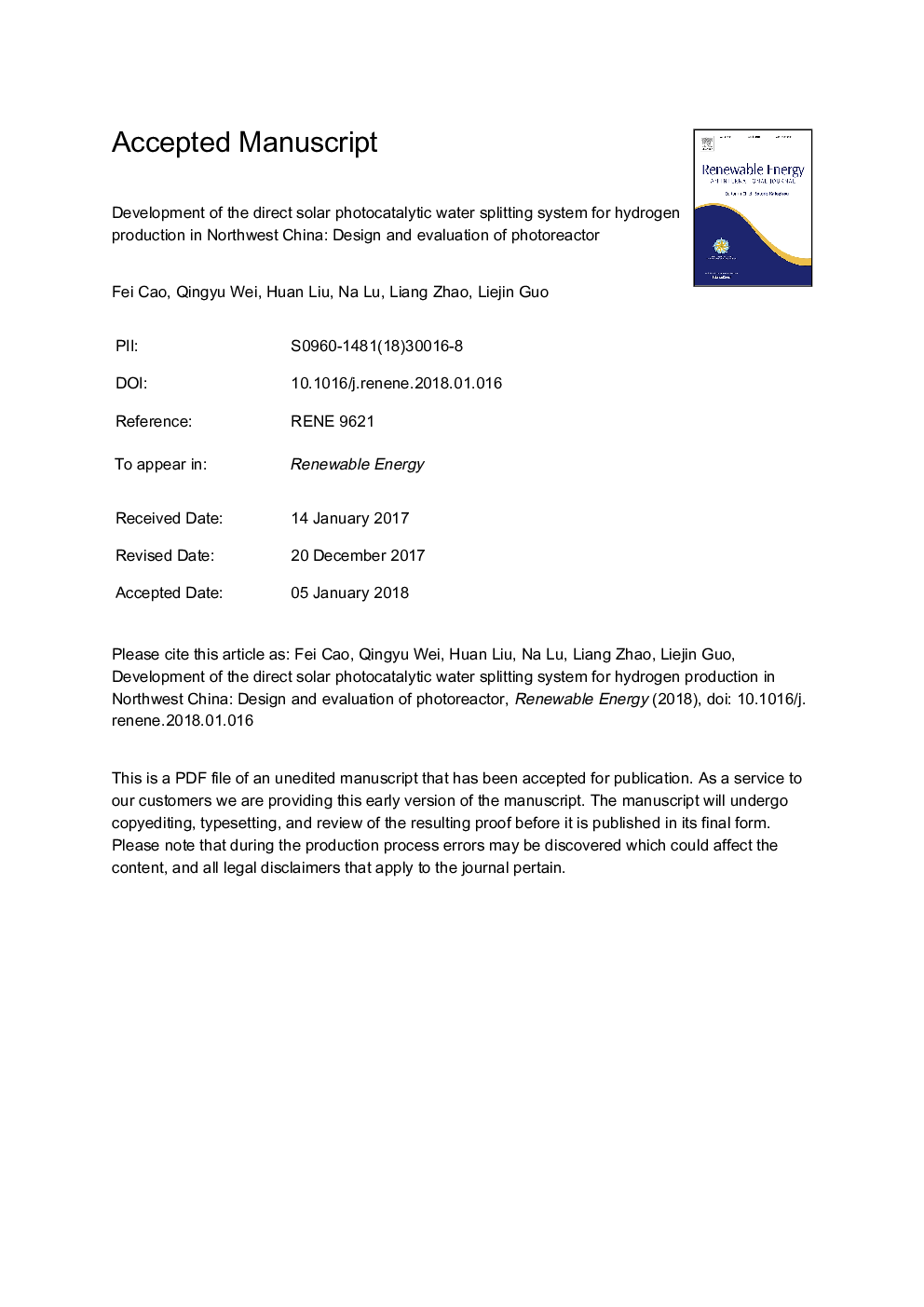| Article ID | Journal | Published Year | Pages | File Type |
|---|---|---|---|---|
| 6764717 | Renewable Energy | 2018 | 32 Pages |
Abstract
A novel CPC reactor for solar photocatalytic hydrogen production was designed and evaluated in the present study. Two operation models, namely the natural circulation model and the gas disturbance model, are proposed and illustrated from the viewpoints of thermodynamics and hydrodynamics. The designed photoreactor is operated under natural circulation for most of the time, with high pressure gas disturbing the sedimentary photocatalysts from time to time. The CPC parameters are designed according to the local meteorological conditions. The reactor performance such as the radiation distribution on the absorber tube, the absorbed solar irradiation, the critical flow rates and the hydrogen productivity are estimated and analyzed. An east-west orientated, north-south angle adjustable and truncated CPC with the concentration ratio of 4.12 is designed for the photoreactor. The required limiting settling velocity is much larger than the natural circulation velocity, which validates the necessity of gas disturbance. The estimated results show that the ideal mean hydrogen productivities are 2.9â¯L/h and 4.0â¯L/h in a typical spring and summer week respectively, with the photocatalyst being Cd0.5Zn0.5S.
Related Topics
Physical Sciences and Engineering
Energy
Renewable Energy, Sustainability and the Environment
Authors
Fei Cao, Qingyu Wei, Huan Liu, Na Lu, Liang Zhao, Liejin Guo,
